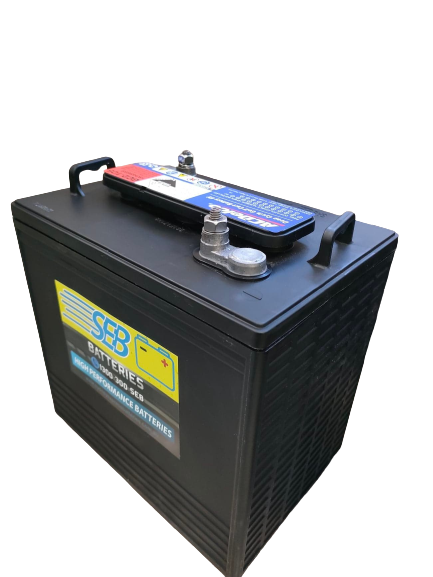Deep-cycle batteries have revolutionized the way we store and use energy in various applications. Whether you’re exploring the great outdoors in your RV or harnessing solar power for sustainable living, deep-cycle batteries provide a reliable and long-lasting power solution. In this comprehensive guide, we will delve into the world of deep-cycle batteries, exploring their features, benefits, and key factors to consider when selecting the perfect energy storage option for your needs. From understanding their unique technology to optimizing maintenance, this article will equip you with the knowledge to make the most of deep-cycle batteries in your daily life.

Understanding Deep-Cycle Batteries
Deep-cycle batteries are a type of lead-acid battery specially designed for deep discharging and recharging cycles. Unlike traditional automotive batteries, which are primarily used for engine starting and shallow cycling, deep-cycle batteries are built to provide a steady flow of power over an extended period. These batteries are commonly used in applications that require frequent and deep discharging, such as renewable energy systems, golf carts, electric vehicles, boats, and RVs.
Advantages of Deep-Cycle Batteries
- Deep-cycle batteries offer a range of advantages that make them ideal for various energy storage needs:
- Long Service Life: Deep-cycle batteries have a longer lifespan compared to standard batteries, making them a cost-effective option over the long term.
- Deep Discharge Capability: These batteries can be discharged to a much lower state of charge without damaging the cells, allowing you to use more of their capacity before recharging.
- Enhanced Durability: Deep-cycle batteries are designed to withstand repeated deep discharging and recharging cycles, making them highly durable and reliable.
- Versatility: Deep-cycle batteries find applications in a wide range of industries, from off-grid renewable energy systems to marine and recreational vehicles.
- Sustainable Energy Storage: By harnessing renewable energy sources such as solar and wind power and storing them in deep-cycle batteries, you can achieve sustainable and eco-friendly energy storage.
Types of Deep-Cycle Batteries
- Several types of deep-cycle batteries are available, each with its unique characteristics and applications:
- Flooded Lead-Acid (FLA) Batteries: FLA batteries are the traditional deep-cycle batteries with removable caps, requiring periodic maintenance to check electrolyte levels and add distilled water.
- Absorbent Glass Mat (AGM) Batteries: AGM batteries are maintenance-free and feature a specialized glass mat separator that absorbs and immobilizes the electrolyte. They are spill-proof and suitable for applications where regular maintenance is not feasible.
- Gel Batteries: Gel batteries use a gel-like electrolyte, making them more resistant to vibration and shock. They are ideal for deep-cycle applications in harsh conditions.
- Lithium-Ion Batteries: Lithium deep-cycle batteries offer the highest energy density, longer lifespan, and faster charging compared to lead-acid batteries. They are a premium option for demanding applications.
Applications of Deep-Cycle Batteries
- Deep-cycle batteries play a crucial role in a variety of applications:
- Renewable Energy Systems: Deep-cycle batteries store excess energy generated from solar panels or wind turbines for use during low-energy production periods.
- Recreational Vehicles (RVs): Deep-cycle batteries power appliances, lighting, and electronics in RVs, providing a reliable source of energy for road trips and camping adventures.
- Marine and Boating: Deep-cycle batteries are used for onboard electronics, lighting, and trolling motors in boats, ensuring reliable power while out on the water.
- Golf Carts: Deep-cycle batteries power electric golf carts, allowing golfers to navigate the course quietly and efficiently.
- Off-Grid Living: Deep-cycle batteries are crucial for off-grid homes, providing continuous power for lighting, heating, and appliances without reliance on the utility grid.
Tips for Maintaining Deep-Cycle Batteries
- Proper maintenance is essential to ensure the longevity and optimal performance of deep-cycle batteries:
- Regular Inspections: Check the battery regularly for signs of damage, leaks, or corrosion. Clean terminals with a mixture of baking soda and water and tighten any loose connections.
- Charging: Use a compatible charger designed for deep-cycle batteries and follow manufacturer guidelines for charging times and voltages.
- Avoid Over-Discharging: While deep-cycle batteries can handle deep discharging, avoid discharging below 50% of their capacity regularly, as it can impact battery life.
- Temperature Control: Deep-cycle batteries perform best in moderate temperatures. Protect them from extreme heat or cold to extend their lifespan.
- Proper Storage: If storing deep-cycle batteries for an extended period, charge them fully and keep them in a cool, dry place
SEB’s conclusion on Deep Cycle Batteries.
Deep-cycle batteries offer a reliable and sustainable energy storage solution for a wide range of applications. Their long service life, deep discharge capabilities, and versatility make them a valuable asset for off-grid living, recreational vehicles, marine use, and renewable energy systems. By understanding their unique advantages and following proper maintenance practices, you can harness the full potential of deep-cycle batteries and power your adventures and energy needs with efficiency and confidence. Invest in deep-cycle batteries and unlock the power of long-lasting energy storage for a brighter and more sustainable future.
For inquiries on your next deep-cycle battery, please visit us on Sydney Express Batteries or call us today at 1300 300 SEB
